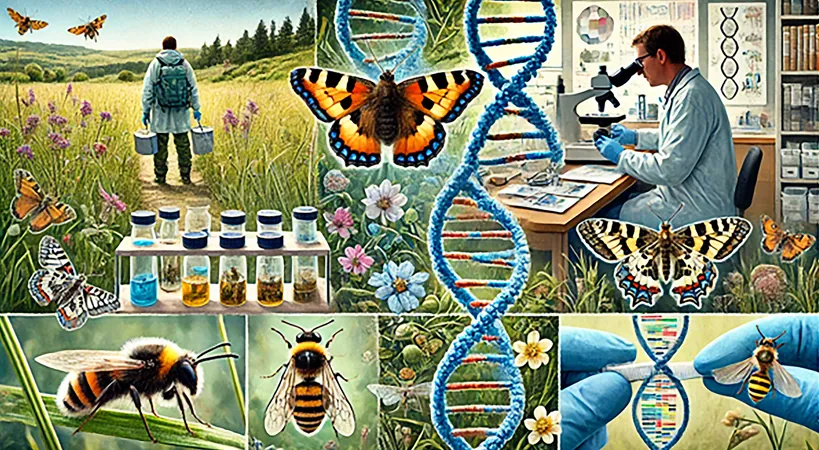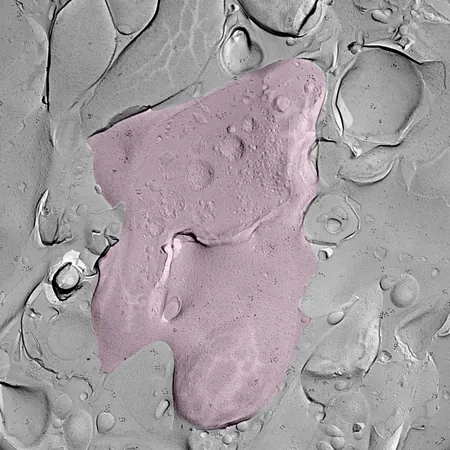
Revolutionary DNA Techniques Transform Insect Identification and Biodiversity Research!
2024-11-21
Author: John Tan
Groundbreaking Study Reveals Efficacy of DNA Techniques
A groundbreaking study from Linnaeus University and Linköping University has revealed that DNA-based methods, especially DNA barcoding and metabarcoding, are significantly more effective in identifying insect species than traditional taxonomic approaches. This exciting development holds transformative potential for biodiversity research and conservation efforts.
The Challenge of Insect Identification
Insects dominate the animal kingdom with the highest number of species, yet the vast majority remain uncharacterized. Understanding their distribution, ecological roles, and the impacts of climate change on their populations has proven difficult. Traditional identification methods, which rely heavily on visual characteristics, are not only time-consuming but also often inadequate for accurately identifying vast quantities of insect specimens.
Advancements in Molecular Techniques
Published in *Molecular Ecology Resources*, the study highlights how advanced molecular techniques leveraging short sequences of genetic material can simplify and accelerate this process. "Our results highlighted that DNA metabarcoding not only enables accurate assessments of species presence but also provides insights into their relative populations through standardized sampling," explains Romana Salis, a postdoctoral researcher involved in the study. "Such methods are rapidly evolving from supplementary tools to robust alternatives for traditional taxonomy."
A Comprehensive Examination of Insect Samples
The research involved a meticulous examination of over 26,000 insect samples, including butterflies, bumblebees, and parasitic wasps, to compare conventional identification methods with these innovative molecular techniques.
Importance of Efficient Identification for Conservation
"The ability to efficiently identify insect species is paramount for tracking population dynamics, assessing ecological health, and formulating effective conservation strategies," comments Professor Anders Forsman, a key figure behind the research. The urgency of these techniques cannot be overstated as biodiversity faces unprecedented threats from habitat loss and climate change.
Review of Prior Studies
The researchers also undertook a thorough review of 99 prior studies, creating a comprehensive overview of the efficiency of DNA-based identification methods. "Our findings underscore the critical importance of these advanced methods in supporting conservation efforts. Nevertheless, we highlighted significant research gaps—certain insect taxa and geographic areas remain severely understudied," Salis notes.
The Need for Collaboration
Importantly, the study advocates for enhanced partnerships between molecular biologists and taxonomists to further refine these promising techniques, ensuring that they can better inform conservation policies and biodiversity assessments in an era increasingly challenged by environmental changes.
Future Implications for Biodiversity Research
Curious about how these advanced methods could reshape our understanding of ecosystems? Stay tuned as we delve into the groundbreaking implications for conservation and what this means for the future of biodiversity!


 Brasil (PT)
Brasil (PT)
 Canada (EN)
Canada (EN)
 Chile (ES)
Chile (ES)
 España (ES)
España (ES)
 France (FR)
France (FR)
 Hong Kong (EN)
Hong Kong (EN)
 Italia (IT)
Italia (IT)
 日本 (JA)
日本 (JA)
 Magyarország (HU)
Magyarország (HU)
 Norge (NO)
Norge (NO)
 Polska (PL)
Polska (PL)
 Schweiz (DE)
Schweiz (DE)
 Singapore (EN)
Singapore (EN)
 Sverige (SV)
Sverige (SV)
 Suomi (FI)
Suomi (FI)
 Türkiye (TR)
Türkiye (TR)